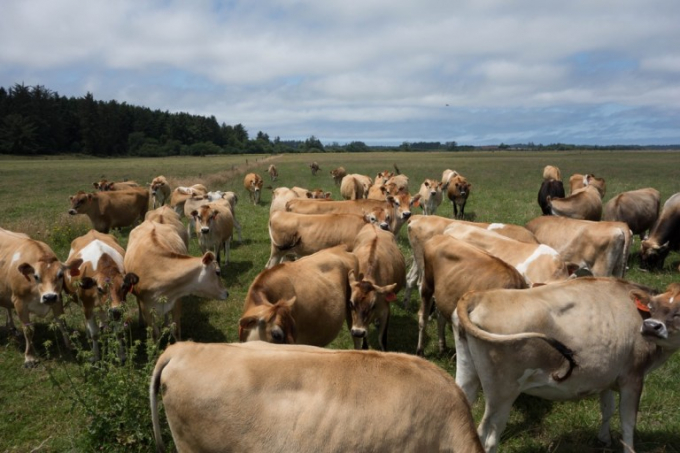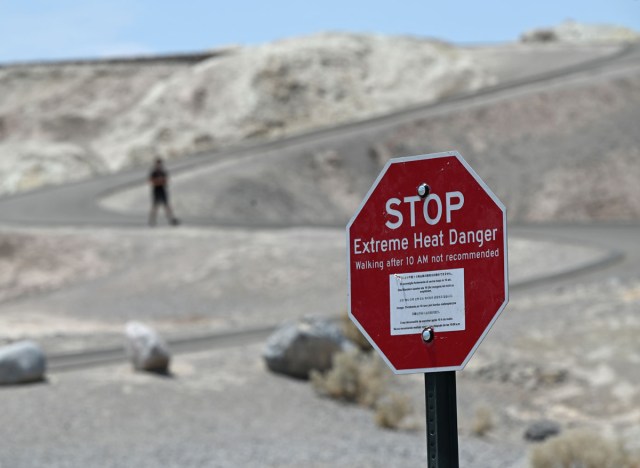June 14, 2025 | 07:13 GMT +7
June 14, 2025 | 07:13 GMT +7
Hotline: 0913.378.918
June 14, 2025 | 07:13 GMT +7
Hotline: 0913.378.918

The drought is impacting farmers, livestock, and vegetation. Photo: Getty.
After a year of skyrocketing grocery prices in the backdrop of a global pandemic, we're not fully in the clear yet. In fact, grocery prices are sky-high right now.
Nevertheless, grocery sales for the week ending June 19 were reportedly up by 15% compared to 2019. Droughts, high grain prices, and shipping delays certainly aren't helping matters. But could another problem raise food prices even more? Let's take a look. (Related: This Is the Best Supermarket in America, New Survey Says).
The West is experiencing an "exceptional drought."

Seven western states—Arizona, California, Idaho, Nevada, New Mexico, Oregon, and Utah - are currently experiencing an "exceptional drought.". Photo: Getty.
Seven western states - Arizona, California, Idaho, Nevada, New Mexico, Oregon, and Utah—are currently experiencing an "exceptional drought." In some places, temperatures are up to 17 degrees above average, and the heat is not only drying out the soil and plants but also putting a strain on water resources, according to the U.S. Drought Monitor. In Oregon, certain conditions are "among the driest going back to 1895."
Related: To get all of the latest grocery store news delivered right to your email inbox every day, sign up for our newsletter!
The severe weather is affecting farmers in several ways.
The drought is impacting farmers, livestock, and vegetation. Per the New York Times:
"In New Mexico, farmers along the Rio Grande were urged not to plant this year. Crop failures have been reported in Colorado and other farming areas. The level of Lake Mead, the huge reservoir on the Colorado River, is so low that Arizona, Nevada, and other states will likely face cutbacks in supplies. In North Dakota, ranchers are trucking water and supplemental feed for their livestock because the rangelands are so dry and the vegetation is stunted."
What does this mean for grocery prices?
In a move to combat rising prices, grocery stores are stockpiling inventory. Walmart, meanwhile, has pledged to keep costs low this summer in order to woo customers who are eager to get out of their homes more than a year after the start of the pandemic. However, the Wall Street Journal previously reported that executives anticipate "the highest price increases in recent memory."
What grocery staples are likely to be impacted?

A woman looking at grocery receipt. Photo: Getty.
"While high inflation for some goods and services might prove to be transitory, the run-up in prices for food staples such as beef, pork, and milk might be extended by the effects of severe drought," The Journal's Danny Dougherty and Peter Santilli wrote earlier this month.
(Eatthis.com)

(VAN) Extensive licensing requirements raise concerns about intellectual property theft.

(VAN) As of Friday, a salmonella outbreak linked to a California egg producer had sickened at least 79 people. Of the infected people, 21 hospitalizations were reported, U.S. health officials said.

(VAN) With the war ongoing, many Ukrainian farmers and rural farming families face limited access to their land due to mines and lack the financial resources to purchase needed agricultural inputs.

(VAN) Vikas Rambal has quietly built a $5 billion business empire in manufacturing, property and solar, and catapulted onto the Rich List.

(VAN) Available cropland now at less than five percent, according to latest geospatial assessment from FAO and UNOSAT.

(VAN) Alt Carbon has raised $12 million in a seed round as it plans to scale its carbon dioxide removal work in the South Asian nation.

(VAN) Attempts to bring down the price of the Japanese staple have had little effect amid a cost-of-living crisis.